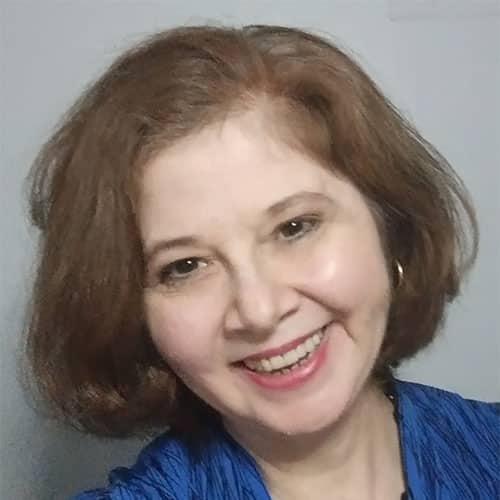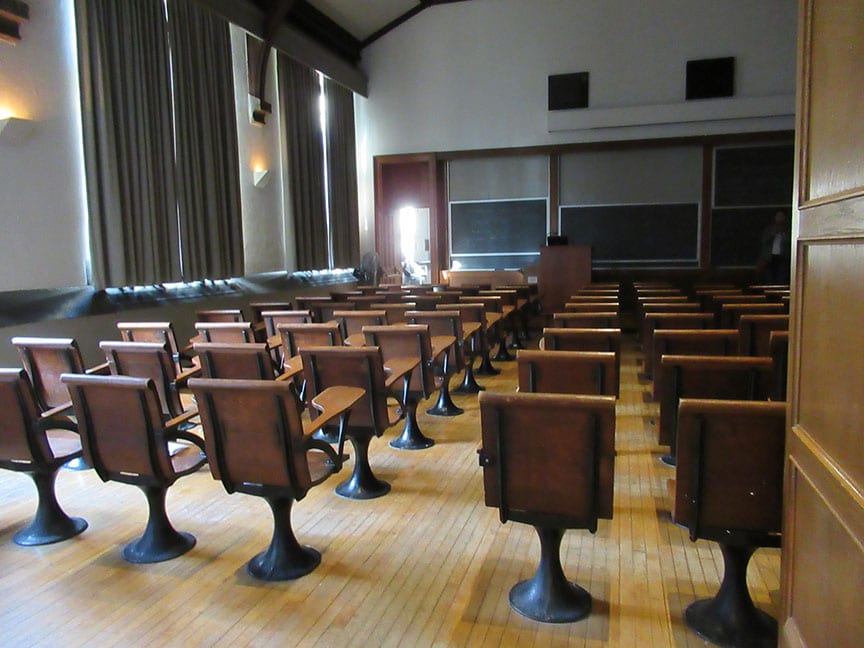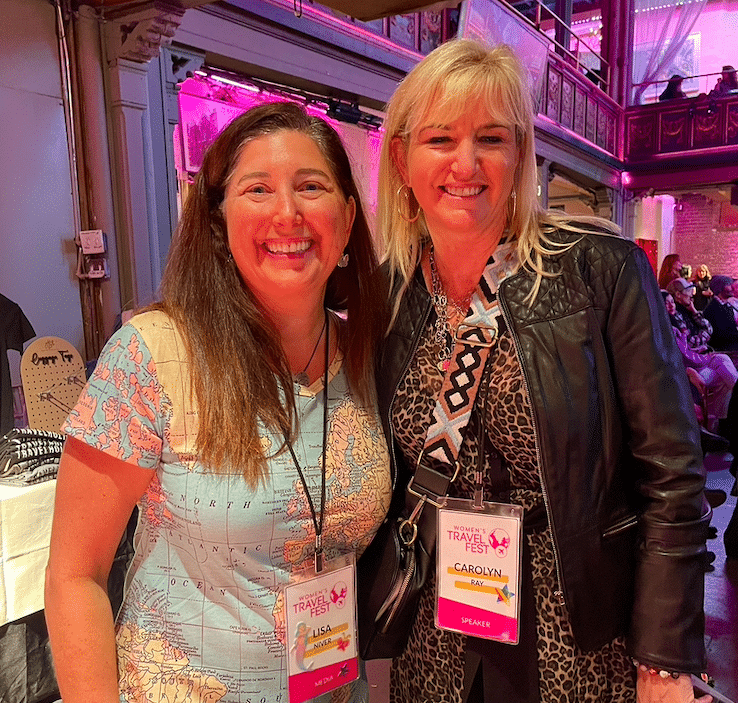 Courtesy of Isaac Brynjegard-Bialik
Courtesy of Isaac Brynjegard-Bialik
When the pandemic began and Southern California went into lockdown, Isaac Brynjegard-Bialik wanted to regain a sense of control over his life. So, he said he did the same thing that Jewish artists have always done in difficult times: he started making golems.
Brynjegard-Bialik cuts up comic books and reassembles them into work made of clean lines and patterns, sinuous shapes and sharp edges, large fields of color and small intimate spaces.
“Golems are a Jewish creation, and so is the American comic book world, and the movies and culture have sprung up from that,” he said. “Jews are storytellers and problem-solvers and seekers of justice — golems bring that all together.”
Brynjegard-Bialik’s “Paper Golems: A Pandemic Diary” along with Ruth Weisberg‘s “The Water Dancers” and Aline Mare’s “Mirabilia” are being featured at the Dortort Center for Creativity in the Arts at UCLA Hillel through March 11. The Center is hosting a winter 2022 reception on Tuesday, March 1, from 7 to 9 p.m.
When Brynjegard-Bialik was a student at UCLA, he spent a lot of time at Hillel, so displaying his art in such a formative and foundational place has a lot of significance.
When Brynjegard-Bialik was a student at UCLA, he spent a lot of time at Hillel, so displaying his art in such a formative and foundational place has a lot of significance.
“Since the work is such a personal series of my experiences weathering the pandemic in Southern California, showing the work in this community [and] sharing it with people who faced all of this with me felt like exactly the right way to bring these golems into the light,” he said.
Perla Karney, the artistic director for the Dortort Center, said, “It’s been the joy of my life to bring art and culture to Hillel at UCLA.”
Karney, who is in her 18th year as artistic director, has exhibited more than 100 artists from around the world. Since 2005, she has given UCLA School of the Arts and Architecture students a platform to showcase their art every spring.
“I am obviously very honored and thrilled to have Ruth Weisberg display her art at Hillel at UCLA together with Isaac Brynjegard-Bialik and Aline Mare,” Karney said. “Each artist brings their unique vision and immense talent to their works. I feel so blessed and grateful that our galleries at Hillel at UCLA have gained so much respect in the Jewish artist community.”
Ruth Weisberg is professor of fine arts and director of the USC Initiative for Israeli Arts and Humanities at the University of Southern California; she founded the Jewish Artists Initiative of Southern California in 2004.
“I make art out of all aspects of my identity, finding in the process that art integrates my experiences, beliefs and Jewish heritage,” Weisberg said.
“The Water Dancers,” Weisberg’s exhibit, show images “mostly of women underwater, [which] are very dreamlike and imaginative,” she said. “The largest painting depicts lovers embracing set ambiguously in a watery harbor, which is actually a depiction of the harbor at Tel Aviv. I hope in the case of all these works of art, the viewer will ask themselves, ‘How much is a dream and how much is a new reality?’”
Weisberg’s work is in 60 major museum collections, including the Art Institute of Chicago, the Biblioteque Nationale of France, the Metropolitan Museum of Art and the Whitney Museum.
Mare’s contribution to the exhibit, “Mirabilia,” includes new works on paper from her “MicAline” series. She incorporates the materials used in her body of imagery, such as salt, seeds and mica sheets, to create rich, immersive sculptural experiences.

“I am drawn to the teachings in the Kabbalah where secret truths remain abstracted,” Mare said. “This series examines images of minerals and a sense of the body in transformation, pointing to hidden realms of knowledge and the cycles of life.”
She continued, “I have always loved the quote attributed to Hillel: ‘If not now, when.’ My work addresses the ‘now’ as a mystical state of consciousness.”
Rabbi Aaron Lerner, the executive director at Hillel at UCLA, said that in creating this exhibit, “Perla has been indomitable. She works with dozens of different constituents to make an exhibit happen. And in spite of Covid, she’s done it again. We celebrate her vision and ability, in addition to the keen eye that brings such incredible art to Hillel at UCLA.”
Hillel at UCLA is located at 574 Hilgard Avenue in LA. The gallery is free and open to the public. Hours are Monday through Friday, from 10 a.m. to 4 p.m.





















 More news and opinions than at a Shabbat dinner, right in your inbox.
More news and opinions than at a Shabbat dinner, right in your inbox.